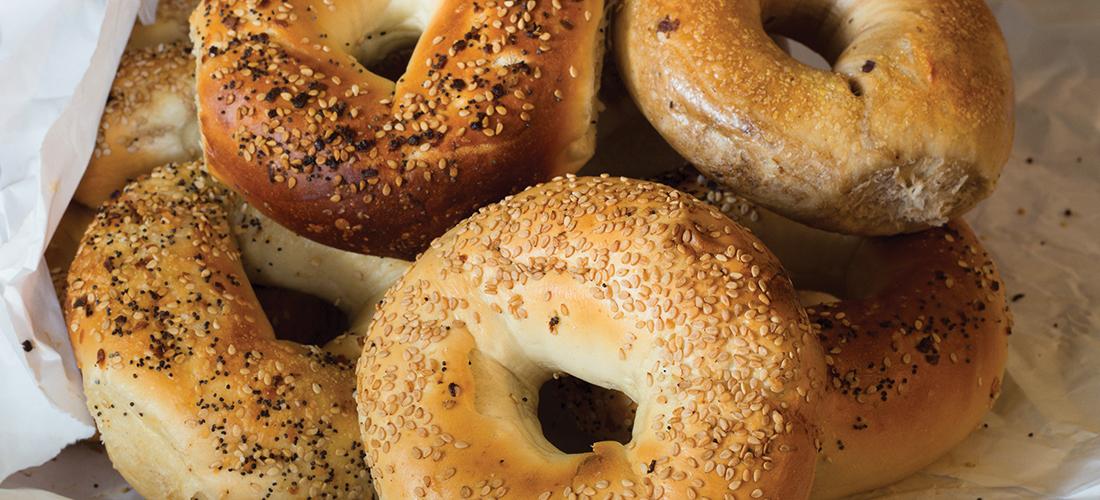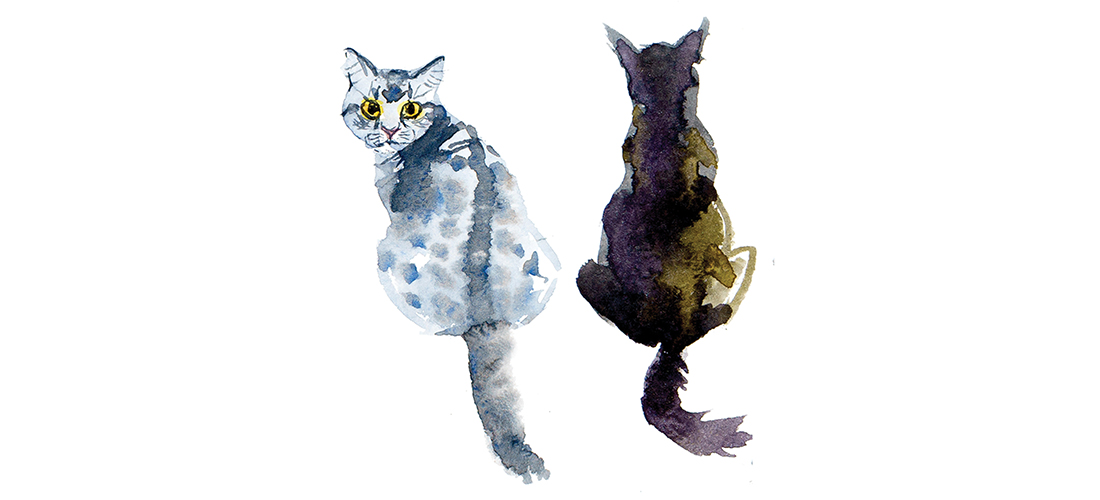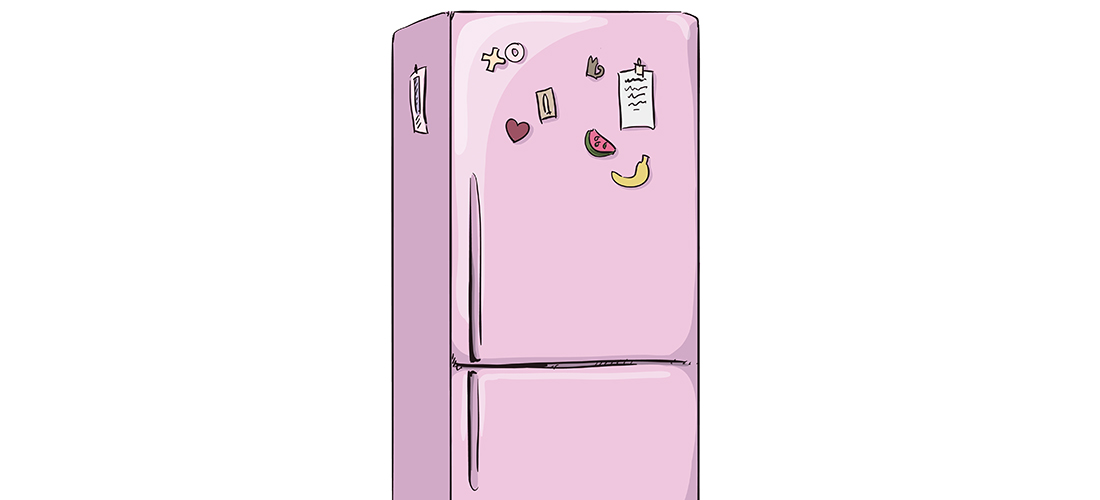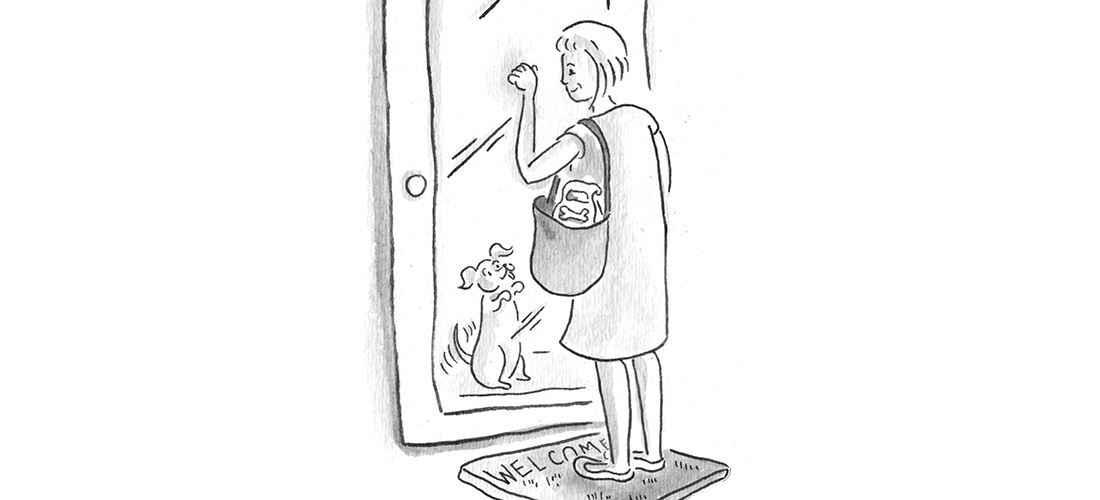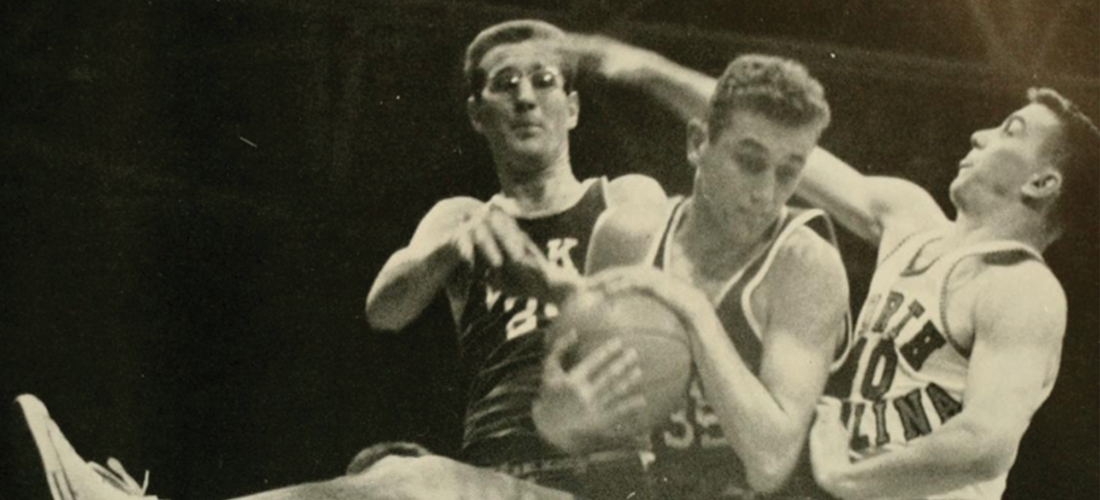A talisman with veggie cream cheese
By Deborah Salomon
Ancestry.com purports to trace your genealogical map and provide signposts. Recently, while spreading the cream cheese, I realized that my signposts are bagels. In fact, were I Little Red Riding Hood, chewy bagel crumbs would mark my trail.
Bagels? C’mon.
There has never been a bagel like New York bagels of the 1940s. They arrived before dawn at little neighborhood deli-groceries, called commissaries, in huge brown paper flour bags. Such a commissary was tucked into the basement of the apartment building where I lived, accessed by a dark, spooky hallway. How proud I was, at age 8, when my parents trusted me to fetch the Sunday papers and bagels, which cost a nickel apiece. Back then, all bagels were plain with a hard glossy shell (dusty with flour from the bag) and chewy interior . . . fantastic, unmatched.
We moved to Asheville — land of the biscuit-eaters — when I was 10. Nobody knew what a bagel was. Lender’s poor excuse had not penetrated the South. I was devastated.
Lots of New York guys showed up at Duke. Parents of the one I picked lived in a fancy Manhattan neighborhood where lo — the corner apartment building had a semi-basement commissary. At dawn, a truck dropped off that heavy paper sack full of still-warm bagels, a quarter each, five for a dollar. Heaven. I was waiting, with the dog that was my excuse for rising early. I married the New York guy.
His employment took us to Montreal, now celebrated as home of the world’s best bagels, of a slightly different ilk: hand-rolled, softer crust, ultra-chewy, baked throughout the day the European way, in wood-fired brick ovens. These irregularly shaped bagels coated in sesame or poppy seeds were truly outstanding. The closest bakery was half a mile away from our apartment. Every morning, I pushed the stroller there, bought one for my teething toddler, one for me. “Bagel” was one of her first words, as she pounded the front door, demanding the walk. Rainy days were hell.
Meanwhile, New York bagels were also going to hell. They became softer, sweeter, sold by franchise bakeries with cute names — Bagel Broker, Bagel Nosh, Yagel Bagel. Add-ins like raisins and blueberries appeared. Green bagels for St. Patrick’s Day, heart-shaped for Valentine’s, pumpkin bagels for Thanksgiving. Heresy! Blasphemy!
Then I moved 90 miles south of the Montreal bagel shrines, to Vermont . . . and guess what? A local attorney of European lineage named Nordahl Brue founded Bruegger’s, which produced a creditable version of the real thing. Bruegger’s turned on-site bakeries into sandwich shops that spread down the Eastern Seaboard, including, coincidentally, walking distance from my apartment in Asheville, where I returned in 2007. By then, hummus, sprouts and asiago were the complements of choice.
Along the way, I researched bagel history. They originated as stirrup-shaped rolls Polish bakers made to shower King Sobieski returning victorious from battle. Eventually, the stirrup was closed into a circle. Jewish bakers brought them to New York’s Lower East Side, where they flourished and moved uptown. In brown paper flour sacks. Incredibly, I discovered a personal connection when my niece married Polish artist Jean Sobieski, a descendant of that same king.
Now, bagels cost almost a dollar apiece. Supermarkets and a few bakeries produce a sweet, mushy imitation in more flavors than Oreos. The only quasi-authentic ones I’ve found are baked at Lidl, the German supermarket chain in Sanford. I read that some fancy food emporium in the Big Apple has resurrected the “original” New York bagel but I doubt it, if they aren’t dropped off in a brown paper flour sack before dawn.
However, I refused to abandon this talisman. Every few months I visit my grandsons, in Montreal, where I buy three dozen bagels (seniors get a baker’s dozen) from a neighborhood bakery with a wood-fired brick oven. After they cool, I pack the 39 gems in bags, freeze and fly them back to North Carolina. One U.S. Customs inspector at the airport smiles when he sees “the bagel lady” approach his checkpoint. I thaw two dozen, warm them a bit, spread with homemade veggie cream cheese and bring to The Pilot/PineStraw office so biscuit-eaters can experience the real thing.
The remaining 15 I hoard, in memory of those long happy walks as a young mother, pushing the stroller through snowy streets, for the ultimate reward. Because, as it happens, this story isn’t about bagels. This story is about a life. PS
Deborah Salomon is a staff writer for PineStraw and The Pilot. She may be reached at debsalomon@nc.rr.com.

